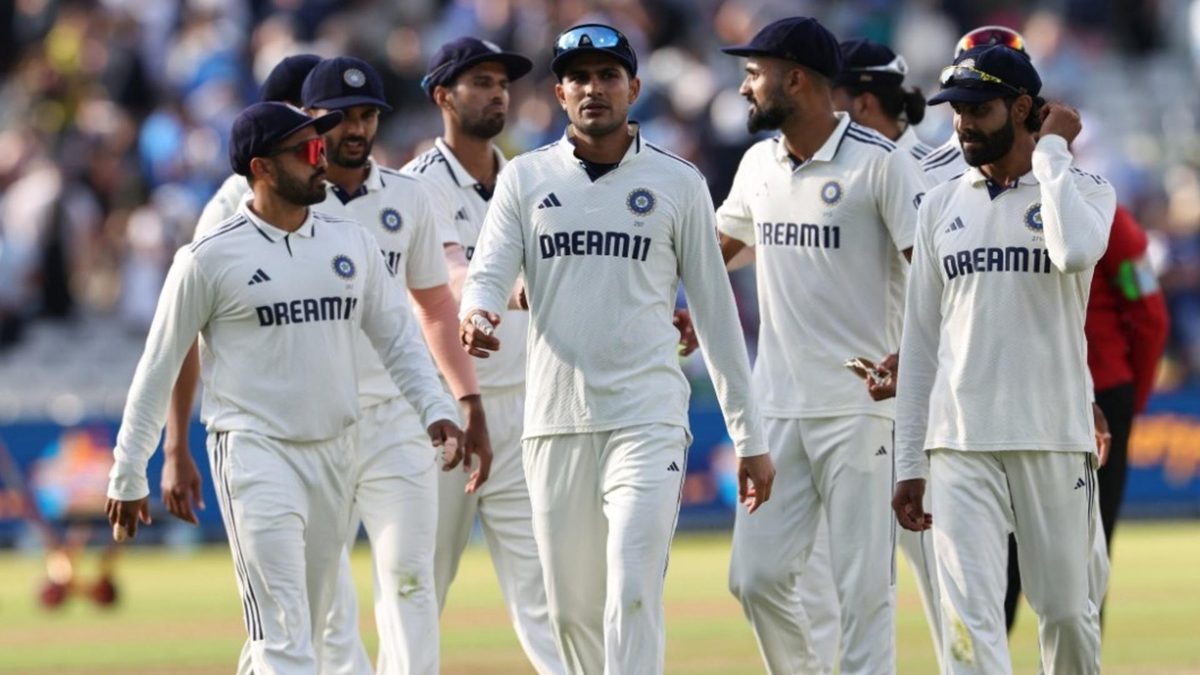
The third England-India Test begins at Lord’s on Thursday, and despite a fine win for the visitors, they face several selection questions in the lead-up to the game.
Who bats at No.3?
One of the key questions for India ahead of the Test series was who would fill the crucial No.3 position. The role, previously occupied by Shubman Gill in Australia, was left vacant after he moved down the order following Virat Kohli’s retirement.
In the two Tests so far, India have tried both debutant Sai Sudharsan and the returning Karun Nair at No.3. Sai, who came into the side with a first-class average of under 40 but is known for his sound technique, was handed the No.3 spot in the first Test. However, he failed to make a significant impact, scoring 0 and 30 in the match. Nair, making his comeback after last featuring in 2017, played at No.6 in the same game but was unable to leave a lasting impression either.
For the second Test, India made three changes as they opted to bring in an extra all-rounder. The axe fell on Sudharsan, with India backing the 33-year-old Nair instead, as he looks to make the most of his second wind in Test cricket. Nair got starts in both innings at Edgbaston, particularly looking solid on day one, but will rue missed opportunities to convert them into substantial scores.
With the position still unsettled, India now face a key decision: should they bring back a youngster, touted as a star for the future, and risk altering their batting line-up again, or offer a longer run to a senior player whose first stint in the side ended abruptly?
What is Nitish Kumar Reddy’s role?
Nitish Kumar Reddy was selected as a batting all-rounder in place of Shardul Thakur for the Australia Test series. While his batting flourished on the tour, peaking with a maiden Test century at the MCG, his bowling contributions left the team wanting more.
Across the series, Nitish bowled only 44 overs in total, exceeding 10 overs in an innings just once. This limited bowling workload added pressure on an already under-performing bowling unit, with the exception of Jasprit Bumrah, of course.
For the first Test against England at Leeds, Nitish was left out, with Shardul reclaiming the No.8 spot. However, Shardul bowled just 16 overs in the match, including only six in the first innings, and contributed just five runs with the bat.
India bolstered their line-up for the second Test at Edgbaston by bringing Nitish back into the XI at No.6. While Nitish is clearly an upgrade on Shardul as a batter, he managed only two runs in that Test and once again had a minimal bowling role, sending down just six overs at an economy of 4.83.
His selection raises an important question: what exactly is his role? From his usage so far, India do not appear to see him as a batting upgrade on Sai; if they did, he would likely have played the first Test. Nor has he been deployed as a genuine fourth seamer. His inclusion at Edgbaston was primarily to provide part-time bowling support in the absence of Bumrah, but with limited overs bowled, that utility has been questionable.
If Nitish is not contributing significantly with either bat or ball, it brings into focus India’s continued preference for bits-and-pieces cricketers over specialists. Should they instead pick a proper batter they trust more, or a full-fledged bowler? While Nitish impressed with the bat in Australia, something Sai has yet to do in overseas conditions, the uncertainty around his role persists.
One spinner or two?
Following the Test at Edgbaston, where India made over 1,000 runs across the two innings, England skipper Ben Stokes described the surface as a "subcontinent pitch," while head coach Brendon McCullum publicly called for a wicket with pace and bounce for the third Test at Lord's. This brings India's bowling attack into sharp focus, particularly their spin combination for the game.
India opted for Ravindra Jadeja and Washington Sundar as their two spinners in the second Test, both to suit the conditions and to deepen their batting line-up. Without that extra batting depth, India had seen a strong position slip away in the first Test, collapsing from 430-3 to 471 all out in the first innings, and then losing six wickets for 31 runs in the second innings.
In the second Test, India again found themselves in trouble at 211 for five. However, with the added stability of Sundar, Gill and Jadeja were able to bat with more freedom in both innings. Sundar himself made a valuable contribution, helping India secure a memorable win.
However, with calls for a more pace-friendly surface at Lord's, playing two spinners may not be ideal for India. If they choose to play only one spinner, it could leave their batting line-up thin after number seven, unless Shardul is brought back in at No.8. Yet, Shardul is not as dependable with the bat as Sundar is, and with England expected to field Jofra Archer, an out-and-out fast bowler, there is a real risk of India's lower order being blown away.
India also have the Kuldeep Yadav question to answer. The best spinner in the squad at present, Kuldeep averaged 23.09 in Tests last year. Yet, he has not played since the home series against New Zealand, with the team management preferring Jadeja for his superior batting and Ashwin for conditions offering greater spin support, such as in the day-night Test match at Adelaide. With the pitches in England not offering significant assistance to spinners - Jadeja and Sundar have picked up only three wickets combined in the series so far - Kuldeep seems to have no clear place in the XI. His lack of batting contribution further complicates his selection prospects, meaning he is likely to continue waiting for an opportunity.
How does Bumrah fit back in?
India took a gamble by leaving out Bumrah for the Edgbaston Test, a move that faced plenty of criticism, especially since the two teams had an eight-day gap between the first and second Tests. However, the decision paid off spectacularly as Mohammed Siraj rose to the occasion and picked up six wickets in the first innings. He was brilliantly supported by Akash Deep, with the pair combining with the new ball to take all 10 wickets in that innings.
Akash Deep was the standout in the second innings as well, making the most of the cracks on the pitch on day five and finishing with six wickets, completing a match haul of ten. On paper, the next move seems straightforward: Bumrah is expected to replace Prasidh Krishna in the playing eleven. Krishna has bowled 62 overs for six wickets at an average of 55.16 and has conceded 5.33 runs per over, the highest economy rate by any Indian bowler who has delivered at least 20 overs in the series. His tendency to bowl loose deliveries means he is likely to sit out, but the bigger question is who will share the new ball with Bumrah?
Statistically, Akash Deep’s bowling average improves when he has the new ball, dropping from 34.50 (when he is the first-change) to 26.40. In contrast, Siraj averages 30.98 when opening but is even more effective as first-change, where his average improves to 23.69.
However, numbers tell only part of the story. Siraj has repeatedly shown that he thrives when leading the attack, bringing energy and aggression that lifts the entire bowling unit. His presence was instrumental in Akash Deep’s success at Edgbaston, with the younger seamer himself crediting Siraj’s constant inputs between overs. Since the start of 2024, Siraj has opened the bowling in all but two instances. Taking away that responsibility now could risk unsettling a bowler whose confidence often fuels his performance. That said, he has always shown himself to be a committed team player.
Follow Wisden for all England vs India updates, including live scores, latest news, team lineups, schedule and more. The live streaming details for the ENG vs IND series in India, UK, USA and rest of the world can be found here. For Wisden quizzes, head here.








